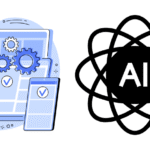
Securing Data Storage in Cross-Platform Development is vital for protecting sensitive information, employing encryption and compliance standards to ensure safety across different devices and operating systems.”
Key Takeaways:
- Implementing secure data storage practices is essential in cross-platform development
- Developers must prioritize data security to maintain the integrity of sensitive information
- There are various cross-platform data storage solutions available, from cloud-based storage to local databases
The Importance of Data Security
As cross-platform development becomes increasingly prevalent, securing data storage is more critical than ever. Data protection, secure data storage, and data security best practices are crucial to safeguarding sensitive information in multi-platform environments.
Failure to prioritize data security can lead to considerable risks, including data breaches, financial loss, legal repercussions, and damage to the organization’s reputation. That’s why it’s essential to implement secure data storage practices and adhere to data security best practices.
“The cost of data breaches continues to rise, with the average cost per breach is $4.35 million. In some cases, it can take an organization months or even years to recover from a data breach.”
To minimize the risk of data breaches, organizations must implement secure data storage practices across all platforms. This includes data encryption, access controls, regular backups, vulnerability assessments, and secure data transfer protocols.
Cross-Platform Data Storage Solutions
When it comes to ensuring multi-platform data security, developers have several cross-platform data storage solutions at their disposal. It is important to choose the right storage option that aligns with the specific needs of the project while prioritizing secure storage options.
Cloud-Based Storage
Cloud-based storage offers an attractive storage solution for cross-platform development as it provides centralized storage accessible by different platforms. Cloud storage services like Amazon S3, Microsoft Azure, and Google Cloud Platform offer secure storage options that are scalable, affordable, and easy to integrate into cross-platform applications.
Local Databases
Local databases provide a reliable and secure storage solution for cross-platform development. SQLite, for instance, is a popular local database solution that offers a lightweight, self-contained SQL database engine that is easy to configure and integrate. It is also cross-platform compatible, making it a popular choice for mobile app development.
File Systems
File systems provide an alternative solution for cross-platform storage. Developers can opt to save files locally on the device or on a network file share. While file systems offer flexibility and ease of access, it is important to ensure secure storage to safeguard sensitive information.
Comparison Table of Cross-Platform Data Storage Solutions
| Storage Option | Pros | Cons |
|---|---|---|
| Cloud-Based Storage | Centralized storage accessible by different platforms, scalable, affordable, easy integration | Internet connectivity dependent, less control over data, potential security risks |
| Local Databases | Reliable and secure storage, self-contained database engine, cross-platform compatible | Less scalable for larger projects, requires local storage on device |
| File Systems | Flexible, easy to access, supports multiple file types | Potential security risks, less centralized, more prone to data loss |
When implementing cross-platform data storage solutions, developers need to prioritize secure storage options that maintain data integrity. By evaluating these options and choosing the right one that aligns with the specific project needs, developers can ensure that the sensitive information remains safe and secure across different platforms.
Secure Storage Techniques for Cross-Platform Development

Developers must implement secure storage techniques to safeguard sensitive data in cross-platform development. By prioritizing data security, developers can mitigate risks and maintain the integrity of information across platforms.
Encryption Methods
Encryption is the process of converting data into a format that cannot be read by unauthorized users. In cross-platform development, encryption is an essential technique for securing data storage. There are various encryption methods available to developers, including:
| Encryption Method | Description |
|---|---|
| Symmetric Encryption | Uses the same key for encryption and decryption. It is fast and efficient but potentially less secure. |
| Asymmetric Encryption | Uses different keys for encryption and decryption. It is slower but more secure than symmetric encryption. |
| Hashing | Converts data into a fixed-length string of characters. It is used for verifying data integrity but cannot be reversed. |
Developers must carefully evaluate the encryption method and key length based on the sensitivity of the data being stored.
Access Controls
In addition to encryption, access controls are another critical technique for secure data storage in cross-platform development. Access controls help restrict access to sensitive data by only allowing authorized users to view or modify it. Developers can implement access controls in various ways, including:
- Role-Based Access Control (RBAC): This technique restricts access based on the user’s role or job function.
- Attribute-Based Access Control (ABAC): This technique restricts access based on specific attributes, such as location or time of day.
- Multi-Factor Authentication (MFA): This technique requires multiple methods of authentication, such as a password and a fingerprint scan.
Other Techniques
Developers can also employ other secure storage techniques to enhance data security in cross-platform development, including:
- Data Backup: Regular backups of data ensure that it can be restored in case of data loss or corruption.
- Vulnerability Assessment: Regular assessments of system vulnerabilities help identify and address security issues before they can be exploited.
- Secure Data Transfer Protocols: Developers can implement secure data transfer protocols, such as HTTPS, to ensure secure communication between different platforms.
By implementing these techniques, developers can safeguard sensitive information and ensure secure data storage in cross-platform development.
Securing Data in Mobile Apps
Mobile app development requires special attention when it comes to securing data storage. As a developer, I understand the need to prioritize data security in cross-platform app development. In this section, I will discuss the challenges of securing data in mobile apps and provide tips for implementing secure database management.
Challenges of Securing Data in Mobile Apps
Mobile apps are highly susceptible to security risks due to their unique characteristics, such as the ability to access sensitive data from multiple sources, reliance on third-party libraries, and the risk of data theft through public Wi-Fi networks. The following are some challenges of securing data in mobile apps:
- Lack of physical security as mobile devices can be easily stolen or lost.
- Vulnerability to malware and hacking due to the low security of mobile operating systems.
- Usage of public Wi-Fi networks, which makes it easy for hackers to intercept data transmissions.
- Mobile apps often access sensitive data from various sources, such as social media accounts and cloud storage services, which increases the risk of data breaches.
- Mobile apps rely heavily on third-party libraries, which may contain vulnerabilities that can be exploited by hackers.
Tips for Implementing Secure Database Management
Implementing secure database management is essential for safeguarding sensitive data in mobile app development. The following tips can help developers ensure secure data storage:
- Use encrypted databases: Encrypting mobile databases can help protect sensitive data even if the device is lost or stolen.
- Limit access controls: Limiting access to sensitive data can reduce the risk of data breaches. Developers can use access control techniques, such as role-based access control and two-factor authentication, to restrict access to specific users.
- Use secure transmission protocols: Using secure transmission protocols, such as SSL/TLS, can help protect data transmitted over public Wi-Fi networks from being intercepted by hackers.
- Regularly update third-party libraries: Developers should prioritize regularly updating third-party libraries to prevent vulnerabilities from being exploited by hackers.
- Encrypt data at rest and in transit: Mobile apps should employ encryption techniques to protect sensitive data both at rest on the device and in transit over the network.
Securing data storage in cross-platform development requires developers to prioritize data security and implement robust strategies for maintaining data integrity. In mobile app development, developers should pay special attention to the unique challenges of securing data storage and use secure database management techniques to protect sensitive information.
Cross-Platform Data Encryption Techniques

Encryption is an essential aspect of securing data storage in cross-platform development. It involves the conversion of plain text into a coded message to protect it from unauthorized access or tampering. In this section, I will cover some popular cross-platform data encryption techniques that developers can use to ensure secure data transmission and storage.
Symmetric Encryption
Symmetric encryption involves the use of a single secret key to encrypt and decrypt data. It is a popular technique because of its simplicity and fast processing speed. However, its biggest drawback is that the key must be securely shared between all parties involved in the communication process.
Asymmetric Encryption
Asymmetric encryption involves the use of two keys – a public key for encryption and a private key for decryption. This technique is highly secure because the private key is never shared with anyone. However, it is slower than symmetric encryption and requires more processing power.
Hashing
Hashing is a technique that converts data into a fixed-length string of characters. The resulting hash is unique to the input data and cannot be reversed to obtain the original data. This technique is commonly used to verify data integrity and protect passwords.
Transport Layer Security (TLS)
Transport Layer Security (TLS) is a protocol that provides secure communication over the internet. It involves the use of digital certificates to authenticate the identity of parties involved in the communication process and encrypt data transmission. TLS is widely used in e-commerce and online banking applications.
Implementing cross-platform data encryption techniques is crucial for ensuring secure data storage and transmission in development. Developers must carefully evaluate their encryption needs and choose the most appropriate technique for their project.
By using a combination of encryption techniques and implementing other secure storage techniques, developers can safeguard sensitive information across platforms.
Best Practices for Data Storage Security
As a developer, ensuring data storage security is crucial for maintaining the integrity of sensitive information across different platforms. To achieve this, it is essential to adhere to data security best practices and implement secure data management techniques. In this section, I will discuss some essential guidelines that developers should follow to ensure data storage security in cross-platform development.
Regular Backups
Regular backups are essential for securing data in cross-platform development. Developers should make a habit of creating backups of all critical data at regular intervals. This ensures that valuable information is not lost in the event of a cybersecurity breach or data loss incident. The backups should be kept in secure storage locations, preferably encrypted, to prevent unauthorized access.
Vulnerability Assessment
Developers should regularly perform vulnerability assessments to identify and mitigate potential security threats. This includes assessing potential vulnerabilities in software, networks, and storage infrastructure. By performing regular vulnerability assessments, developers can identify potential weaknesses and implement necessary security measures to safeguard data storage.
Secure Data Transfer Protocols
When transferring data between different devices or networks, it is essential to use secure data transfer protocols. This includes encrypted channels, secure sockets layer (SSL), and transport layer security (TLS). These protocols ensure that data is transmitted securely and prevents unauthorized access during transmission.
User Access Controls
User access controls are critical for securing data storage in cross-platform development. Developers should implement secure authentication procedures, including passwords, security tokens, biometrics, or two-factor authentication, to ensure that only authorized personnel can access sensitive information. Access controls should be regularly monitored and updated to prevent unauthorized access attempts and ensure that only the relevant personnel have the necessary access rights.
Secure Coding Practices
Secure coding practices play a crucial role in ensuring data storage security in cross-platform development. Developers should follow best practices for secure coding, including input validation, data sanitization, and using secure coding libraries. This ensures that the software is not vulnerable to potential attacks, protecting the integrity of stored data.
By adhering to best practices for data storage security, developers can safeguard sensitive information across different platforms.
Regular backups, vulnerability assessments, secure data transfer protocols, user access controls, and secure coding practices are all essential techniques for securing data storage. Implementing these techniques ensures that sensitive information remains protected, mitigating the risk of potential cybersecurity breaches and data loss incidents.
Cross-Platform Security

As cross-platform development becomes increasingly popular, securing data in development has become a top priority for developers. However, implementing cross-platform security measures can be challenging, as different platforms have varying security requirements.
To ensure cross-platform security, developers need to take a comprehensive approach that encompasses secure storage techniques, secure authentication, and code reviews. By following these strategies, developers can safeguard sensitive information across different platforms.
Secure Storage Techniques
Secure storage techniques are critical for cross-platform security. Developers need to implement encryption methods, access controls, and other techniques to enhance data security. When implementing secure storage techniques, developers should ensure that they are compatible with all platforms.
Cloud-based storage is a popular option for cross-platform development, as it provides a reliable and secure storage solution. However, developers should ensure that data is encrypted before it is transferred to the cloud to prevent unauthorized access.
Local databases are another option for cross-platform data storage, but they require specific security considerations. Developers should ensure that local databases are secured with strong passwords and access controls to prevent unauthorized access. Additionally, regular backups should be conducted to ensure that data can be recovered in the event of a security breach.
Secure Authentication
Secure authentication is critical for cross-platform security. Developers should implement strong authentication mechanisms to prevent unauthorized access to sensitive data. Multi-factor authentication is an effective way to enhance security, as it requires users to provide multiple pieces of information to access sensitive data.
Developers should also consider implementing biometric authentication, such as facial recognition or fingerprint scanning. Biometric authentication is more secure than traditional authentication methods, as it is difficult to replicate.
Code Reviews
Code reviews are a crucial component of cross-platform security. Developers should conduct regular code reviews to identify vulnerabilities in the code and implement fixes to prevent security breaches. Code reviews should be conducted by multiple developers to ensure that all potential vulnerabilities are identified.
Additionally, developers should prioritize testing to ensure that security measures are properly implemented and functioning as intended. Testing should include penetration testing and vulnerability assessments to identify any weaknesses in the system.
Ensuring cross-platform security requires a comprehensive approach that encompasses secure storage techniques, secure authentication, and code reviews. Developers must prioritize data security to safeguard sensitive information across different platforms. By implementing these strategies, developers can mitigate risks and protect against security breaches.
Final Thoughts
Securing data storage in cross-platform development is a critical aspect of maintaining data integrity. By prioritizing data security and implementing data storage best practices, developers can safeguard sensitive information across different platforms. Understanding the importance of data security, and being aware of potential risks associated with inadequate data protection, is paramount in creating secure cross-platform data storage solutions.
Applying secure storage techniques such as encryption methods, access controls, and secure database management is also crucial in safeguarding data in cross-platform development. Mobile apps require specific attention when it comes to securing data storage, and developers must take extra measures to ensure secure storage.
Encryption is a powerful tool that plays a pivotal role in securing data storage across platforms. By employing cross-platform data encryption techniques, data transmission and storage can be made more secure.
External Resources
https://www.cloudflare.com/en-gb/learning/ssl/what-is-asymmetric-encryption/
FAQ

What is the importance of securing data storage in cross-platform development?
Securing data storage in cross-platform development is crucial to maintain data integrity and protect sensitive information across different platforms.
Why is data security important in cross-platform development?
Data security is important in cross-platform development to mitigate risks associated with inadequate data protection and ensure secure data storage.
What are the different cross-platform data storage solutions available to developers?
Developers can choose from various cross-platform data storage solutions, including cloud-based storage and local databases, to implement secure storage across different platforms.
What are some secure storage techniques for cross-platform development?
Secure storage techniques in cross-platform development include encryption methods, access controls, and other strategies to enhance data security.
How can data be secured in mobile apps during cross-platform development?
Securing data in mobile apps during cross-platform development requires special attention to secure database management and implementing data storage best practices.
What are some cross-platform data encryption techniques?
Cross-platform data encryption techniques play a crucial role in ensuring secure data transmission and storage, including methods such as symmetric encryption and asymmetric encryption.
What are the best practices for data storage security?
Best practices for data storage security include regular backups, vulnerability assessments, and implementing secure data transfer protocols to maintain data integrity.
William is a highly accomplished technical author specializing in cross-platform app development. With a rich background in the tech industry, he has worked at prestigious companies like Uber and Facebook, where he honed his skills as an iOS developer since 2009. Throughout his career, William has been an advocate for leveraging frameworks like React Native and Xamarin to create innovative and efficient cross-platform mobile apps.
Having pursued a degree in Computer Science and Mathematics at Caltech, William is equipped with a strong educational foundation. Currently residing in LA with his two daughters, he finds solace in exploring the scenic hills through hiking. Passionate about knowledge sharing, William not only builds cutting-edge applications but also takes pleasure in teaching students how to develop their own cross-platform mobile apps. His expertise, combined with his dedication to empowering others, makes him an invaluable asset in the field of app development.







